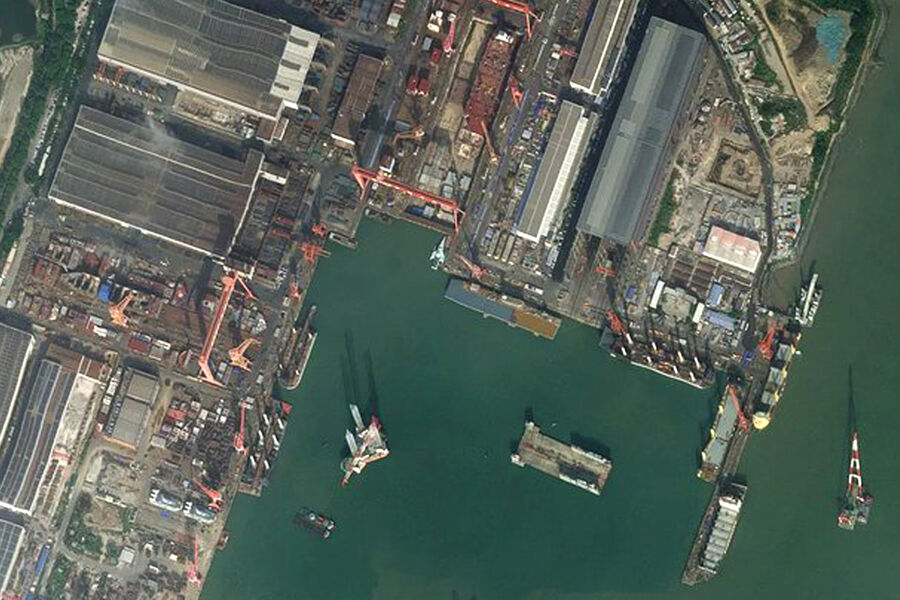China’s New Aircraft Carrier Sparks Interest Amid Naval Expansion

Recent satellite imagery indicates that China is constructing a new and unusual type of aircraft carrier at Guangzhou Shipyard International on Longxue Island in Guangdong province. This vessel, which features a large, open flat top, has caught the attention of military experts due to its atypical design and smaller size compared to China’s existing naval carriers.
Thomas Shugart, a former U.S. Navy submarine commander and fellow at the Center for a New American Security, remarked that this potential new aircraft carrier is “somewhat unusual” in shape and size, making it smaller than the Type 075 amphibious assault ships currently in service. Shugart speculated that it may be the world’s first “ostensibly civilian ‘aircraft carrier’ used as an oceanographic research vessel.”
The report about this new vessel first emerged from The War Zone, which highlighted China’s accelerating production of advanced warships, often rivaling U.S. carrier technology. Earlier this year, China’s most formidable aircraft carrier to date, the Fujian, underwent sea trials, with expectations that it could be operational by 2026. The Fujian, displacing 80,000 tons, surpasses the PLAN’s existing carriers, the 66,000-ton Shandong and the 60,000-ton Liaoning, placing it alongside the supercarriers operated solely by the U.S. Navy.
In addition to these developments, China is also making strides in constructing the world’s largest amphibious assault ship, the Type 076, which features an expansive flight deck comparable to the area of three U.S. football fields. This rapid naval expansion has propelled China’s fleet to over 340 warships, making it the largest navy globally.
The construction of this new aircraft carrier-type vessel may reflect China’s broader “military-civil fusion strategy,” which aims to integrate civilian and military capabilities. Shugart noted that such a vessel could enhance the People’s Liberation Army Navy’s operational and logistical capabilities, particularly in low-threat environments.
Carl Schuster, a former director of operations at the U.S. Pacific Command’s Joint Intelligence Center, suggested that the vessel could serve as a helicopter or drone carrier for the China Coast Guard, which increasingly acts as a quasi-military force. This new capability would enhance the Coast Guard’s surveillance operations in distant waters, particularly in the South China Sea and near Taiwan.
China’s military presence around Taiwan has intensified, with recent large-scale drills demonstrating unprecedented involvement from Coast Guard vessels in the region. Schuster remarked that the new vessel could significantly support Coast Guard operations, especially in quarantine enforcement.
Beyond military applications, the vessel could also play a role in humanitarian efforts, facilitating rapid relief and evacuation in non-combat situations or serving as a logistics support ship in amphibious operations.
Additionally, in a display of its growing naval capabilities, the Liaoning and Shandong carriers recently conducted their first-ever dual-carrier exercise in the South China Sea. This operation, described by state-run Xinhua news service, involved coordinated movements of fighter jets and support ships, aiming to enhance the combat capabilities of China’s aircraft carrier formations.
Experts believe that the collaboration between the Liaoning and Shandong carriers demonstrates the PLA Navy’s increasing complexity and coordination, potentially enabling more sophisticated fleet operations in the future.





















